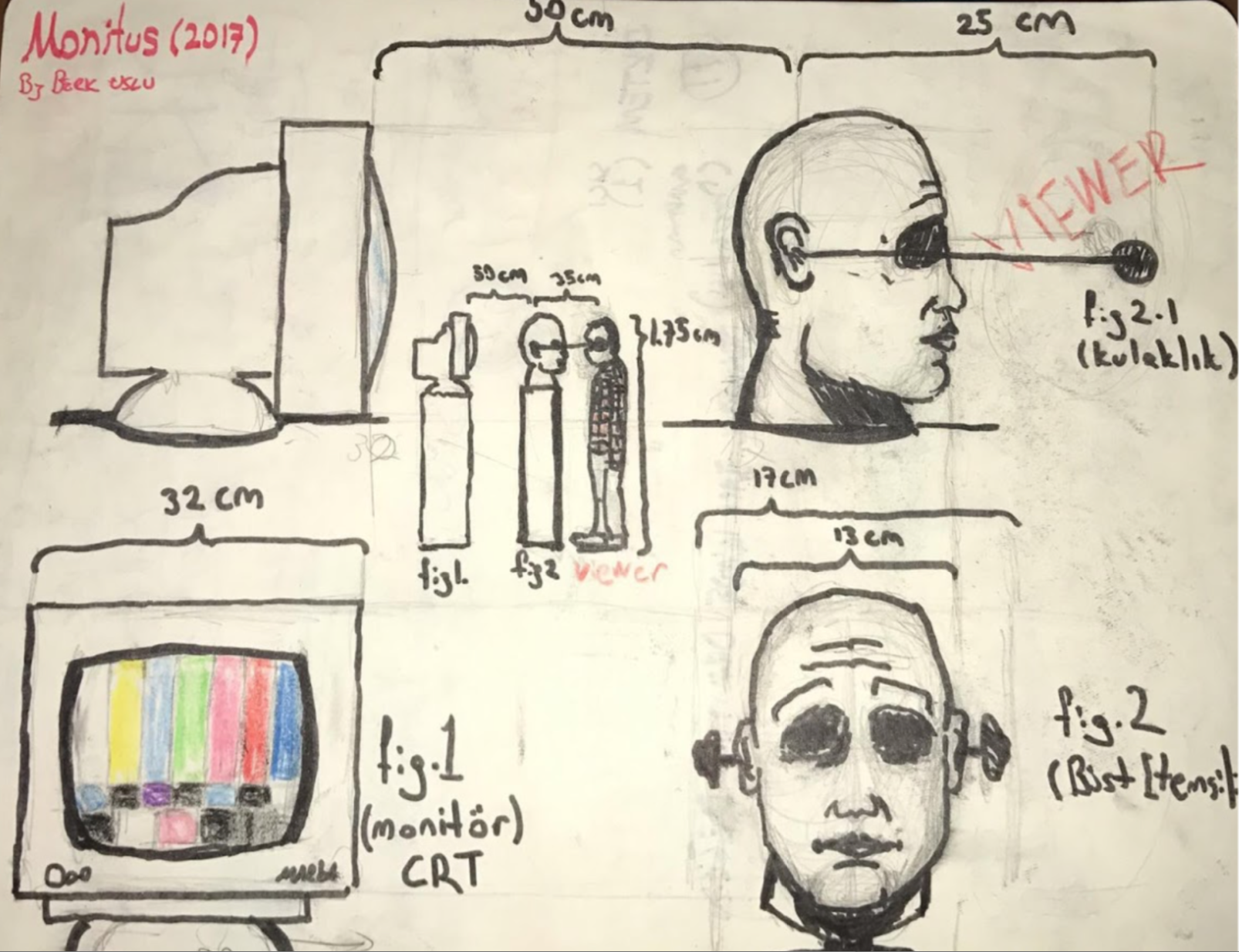filmix
art project
Monitus is a 8 minute fictive experimental narrative about semantic dissonance that will be shown in loops. It will consist of a monitor and a wax sculpted head connected to a pair of headphones. The media that will be presented within the monitor containing excerpts of long shots of Istanbul, portraits of different people and moving image of a record player. We believe we found a way to portray the contrast that is added to the perception process by adding context to an image. When viewer is able to hear the sound via the headphones connected to the wax sculpture, image will be disabled by the head. So for the necessary context, that will add up to comprehend the whole narrative will be left to the viewers decision. To believe in one’s own prejudice or use a served information from a second hand?
“We plan to demonstrate what happens when the context and the image are given separately for a narrative including, lives of different people and the description of a city. Using this, we will question the way people choose for the act of believing,just by seeing the object or acquiring the necessary context.”
Monitus includes three sets of images. A record player, landscapes from Istanbul and portraits of different people. Record player primarily serves to remind the viewer that there’s something to be heard. The sound that will be available during the record player is shown will act as a narrator. The voice that will be the heard will be of a text to speech simulator for the anonymity of the opinion. The views of the city are for creating a sense of the change in the setting. We are in Istanbul and presented with the people from different demographics. We supplied a fictive context for the people. There are obvious contrasts between the stereotypes that are created by the images and description supplied by the voice. But both informations won’t be available at the same time. As for the topic of
Oteberi, we are asking the question, who are we choosing to get face to face for our desire of information. The subject itself from a distance or an anonymous comment at the end of our nose?
All images are shot with Black Magic Cinema Camera with consent of voluntary actors and actresses. The portraits are played by: Gökhan Sal, Serdar Güçsav, Rowhat Yılmaz, Barış Sezer, Dila Gök, Derin Kumbasar, İrem Korkmaz, Tuğçe Özcan, Hür Diren Bankoğlu, Deniz Özen and Baturalp Uzun. For the installation we are going to require a CRT monitor which is already in our disposal and a wax sculpted head. After contacting to wax museum in Turkey we came to conclusion that it will be better off if we design and produce the head ourselves. For that we are going to need a 3-4 Kg’s of wax. For the presentation we are also in the need of two spotlights that will illuminate the work from top.
Concept:
The term monitor is a noun deriving from latin meaning the the thing that warns one from a danger. In time, we became too accustomed with these kind of stimulants that we now choose to get any kind of information from a monitor instead of the subject itself. How a stimulant for any kind of information easily juxtapositions is more important than the information itself. For practice, we tried to stimulate an environment where the viewer has to choose from the stimulant and the image itself.
Mediums:
As for theory neither of the sources are giving direct information. They are both supplying the viewer with indirect information.But for the image in the monitor, we are directly exposed to the subjects while the sound gives us subjective comments.understanding the artwork as a whole requires merging the sound and the image to create a context. For doing so, viewer must get the information from a disturbingly close distance to the wax figure, compromising the view of the image. For our installation the monitor takes places of the “objective” POV like we are used to now. The 4:3 ratio screen is a wink to the 90s aesthetics when the technological mass production started.
The Schema:

SPECTATOR:
Monitus’ first objective is to make our installation a spectacle. For this cause, we boosted the color of the footage all the way and the wax head itself serves as a spectacle as much as an interlocutor. The second objective is to pull focus on a existing narrative for the given topic (Oteberi) The images of the record player should indicate the auditive part of the work. This choice itself, the initiative to interact with the wax figure or to spectate the work from outside is the main subject of the work. The purposely uncomfortable setting for the audition helps the isolation of the context from the target image, so the ambiguity in the communication relentless of the distance or the source of the information could be questioned.